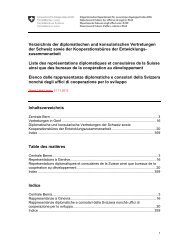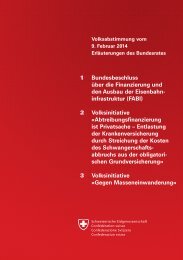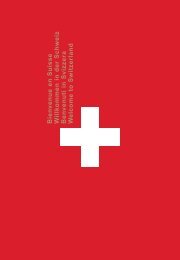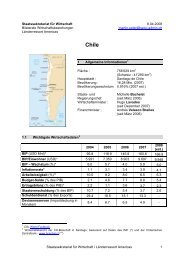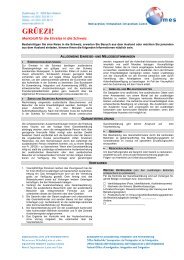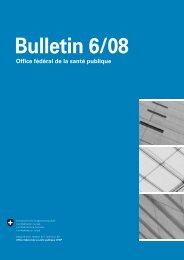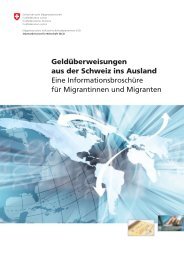SwissInfo
SwissInfo
SwissInfo
You also want an ePaper? Increase the reach of your titles
YUMPU automatically turns print PDFs into web optimized ePapers that Google loves.
CONSOLIDATED FINANCIALSTATEMENTS<br />
BarryCallebaut<br />
Annual Report2010/11<br />
Foreign currency transactions<br />
The functional currency ofthe Group’s entities is the currency oftheir primary economic<br />
environment. In individual companies,transactions in foreign currencies are recorded at the<br />
rate of exchange at the date of transaction. Monetary assets and liabilities denominated in<br />
foreign currencies are translated into respective functional currencies at the exchange rate<br />
prevailing at the year-end date. Any resulting exchange gains and losses are taken to the<br />
income statement. If related to commercial transactions or to the measurement of financial<br />
instruments in coverage of commercial transactions, such foreign currency gains and losses<br />
areclassified as cost of goods sold. Otherwise,foreign currencygains and losses areclassified<br />
as financial income and financial expense.<br />
Foreign currency translation<br />
Forconsolidation purposes,assets and liabilities of subsidiaries reporting in currencies other<br />
than Swiss francs aretranslated to Swiss francs using year-end rates of exchange.Income and<br />
expenses are translated at the average rates of exchange for the year. Differences arising<br />
from the translation of financial statements using the above method are recorded as cumulative<br />
translation adjustments in equity.<br />
Major foreign exchange rates<br />
2010/11 2009/10<br />
Closing rate Average rate Closing rate Average rate<br />
EUR 1.1576 1.2682 1.2925 1.4482<br />
GBP 1.3074 1.4643 1.574 1.6561<br />
USD 0.8037 0.9128 1.021 1.0578<br />
Cash and cash equivalents<br />
Cash and cash equivalents comprise of cash on hand, checks,bank balances and unrestricted<br />
bank deposit balances with an original maturity of 90 days or less.Bank overdrafts that are<br />
repayable on demand and form an integral part of the Group’s cash management are<br />
included as acomponent of cash and cash equivalents for the purpose of the Consolidated<br />
Cash Flow Statement.<br />
Trade receivables and other currentassets<br />
Trade receivables are stated at amortized cost, less anticipated impairment losses. Impairment<br />
provision for receivables represent the Group’s estimates of incurred losses arising<br />
from the failure orinability of customers to make payments when due.These estimates are<br />
assessed on an individual basis,taking into account the aging of customers’ balances,specific<br />
credit circumstances and the Group’s historical default experience.Ifthe Group is satisfied<br />
that no recovery of the amount owing is possible, the receivable is written off and the provision<br />
related to it is reversed.<br />
The Group maintains an asset-backed securitization program for trade receivables,<br />
transferring the contractual rights to the cash flows of third-party trade receivables at their<br />
nominal value minus adiscount. These receivables are derecognized from the balance sheet.<br />
The net amount reported under “Other current assets” (see note 12) or “Other current<br />
liabilities” (see note 21) is the amount of the discount minus the receivables already collected<br />
at the balance sheet date but not yet remitted to the asset-purchasing company.<br />
72



